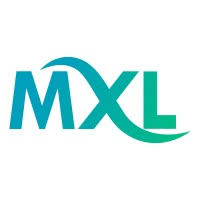
Robinjasper1109
Uploaded on Sep 1, 2025
In a world defined by information overload and constant connectivity, the traditional model of lengthy, classroom-based training feels outdated. Modern professionals in industries from Finance to Healthcare demand a more efficient, flexible, and relevant approach to learning. This is the promise of microlearning. Often seen as a buzzword, the concept is quite simple: it’s the practice of delivering educational content in small, focused, and easily digestible chunks. This article breaks down the key concepts behind microlearning, simplifying what can seem like a complex strategy into a practical guide for any organization. The Core Concepts of Microlearning At its heart, microlearning is built on a few fundamental principles that make it so effective. 1. Brevity is King: The most defining characteristic of microlearning is its short duration. While there's no official rule, a typical Microlearning Course should last no more than 2-5 minutes. This is based on the science of attention spans and cognitive load. By keeping modules short, learners can absorb information without feeling overwhelmed, and it's much easier to fit a quick learning session into a busy schedule—whether during a coffee break or a brief moment between meetings. 2. One Concept, One Module: To maintain brevity, each piece of content must be hyper-focused on a single learning objective. Instead of a 60-minute module on "Sales Techniques," a microlearning approach would break it down into several distinct modules: "Opening the Conversation," "Handling Objections," "Closing the Deal," and "Following Up." This focused approach ensures the information is clear, actionable, and easy to recall. 3. Variety Fuels Engagement: Passive reading or listening quickly leads to disengagement. A successful microlearning application uses a mix of media types to keep learners hooked. This can include short videos, interactive quizzes, dynamic infographics, podcasts, and even quick simulations. A robust Microlearning Platform or a good Microlearning LMS provides the infrastructure to deliver this diverse content seamlessly across devices. 4. Just-in-Time & On-Demand Access: The true power of microlearning lies in its accessibility. Learners should be able to get the information they need, precisely when they need it. This is invaluable for front-line employees. For instance, a Retail associate can quickly reference a product feature video on their phone before talking to a customer, or a Mining worker can watch a safety protocol reminder right before starting a new task. The Technology That Makes It Possible Demystifying microlearning also means understanding the technology that powers it. The right tools are essential for success. A Microlearning Platform is the foundation, serving as the central hub for all your content. These are often specialized Microlearning Software solutions designed to handle short-form content. Modern platforms go beyond simple delivery. Many now function as an AI-Powered Learning Platform, using data analytics to understand learner behavior and recommend relevant microlearning courses to fill specific skill gaps. To create the content, companies rely on Microlearning Authoring Tools. These user-friendly tools allow trainers and subject matter experts to create compelling content quickly, without needing extensive technical knowledge. The latest advancements include an AI-powered Authoring Tool that can even assist in content generation, transforming existing long-form documents into bite-sized modules or suggesting interactive elements to boost engagement. Real-World Applications Across Industries Microlearning's versatility makes it invaluable across a wide range of sectors. In the Finance and Banking industries, microlearning is perfect for delivering quick updates on ever-changing compliance regulations or refreshing staff on a new software feature. The ability to push out these updates instantly ensures the entire organization remains compliant and efficient. For Healthcare professionals, microlearning can provide critical, on-demand training on new medical equipment, patient privacy laws, or updated procedural guidelines. This helps ensure patient safety and regulatory adherence. Similarly, the Pharma and Insurance sectors use it to train sales teams on new products or complex policy details, ensuring they have the right information for every client interaction. In high-risk environments like Oil and Gas and Mining, microlearning delivers vital safety and equipment operation training. The short format allows for frequent refreshers, which is crucial for maintaining a safety-first culture. Conclusion Microlearning isn't a complex concept. It's a simple, elegant solution to the complexities of modern corporate training. By focusing on brevity, single objectives, and engaging content, companies can transform their learning strategies. With the right Microlearning Tools and a robust Microlearning Platform, organizations can move beyond passive learning and empower their employees with the knowledge they need, exactly when and where they need it. This approach doesn't just simplify training; it makes learning an active, continuous, and integral part of an employee’s daily workflow, driving productivity and success across every industry.

Comments